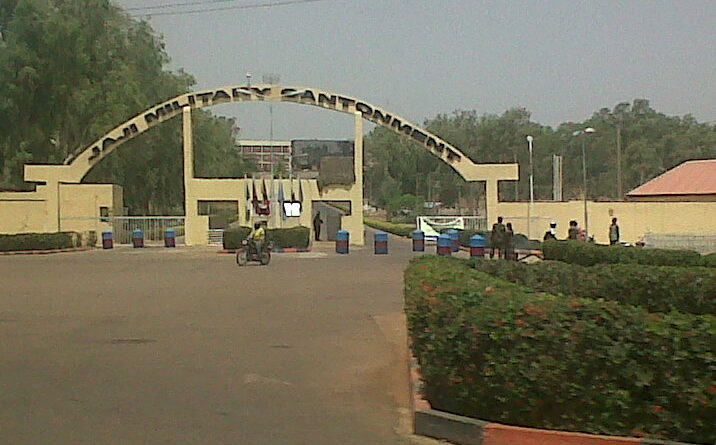Military Cantonments: A Historical Perspective
By Lt Gen Sudhir Sharma
In my last tenure as QMG I recall a very interesting exchange at the highest level. In a meeting on land issues chaired by the RM, and attended by top bureaucrats of the MoD the RM asked me “General, why are Cantonments in the centre of town and occupying prime land?” I replied tongue in cheek that cantonments were on the outskirts, but cities have slowly crept up to the cantonments and surrounded them! This in my view is at the very heart of the problem facing cantonments, and the envy, bordering on jealously, with which cantonments are viewed by a few misinformed people who feel that the army is privileged and even pampered, living in clean and green cantonments. The historical facts though are completely at variance with these misinformed perceptions.
Cantonments derive their name from Swiss Cantons, or districts and were set up by the British in India for entirely different reasons. When the British troops arrived in India, they fell sick very often due to malaria, dysentery and other infectious and waterborne diseases. These diseases also took a toll on Indian troops.
Thus it was decided to create army cantonments well away from cities, often in the wilderness, at the very outskirts of city limits. The additional advantage of such a move was that parades, training and marches with horse’s, mules etc would not inconvenience the local population.
I wonder if in the 1950s any one in Delhi had even heard of a faraway place in the jungle called Dhuala Kuan! It is to the credit of the Army that these outlying areas, where they were shunted away, became islands of excellence and oasis of greenery; the modern equivalent of smart cities. Today, they are the lungs and biodiversity havens of most cities.
The first cantonment was established in Barrackpore in 1765 and the last one created recently was Ajmer. There are a total of 62 cantonments, mostly in Central and Western Command. These are distinct from military stations which number about 2000 and are exclusive for the army. The current order on road opening thankfully does not apply to military stations.
It is worth pointing out that the Army is fully considerate of the needs of the nation and has not only allowed access to cantonments but also given away prime defence land for public good.
The Delhi metro link from Dhaula Kuan in New Delhi going to the airport is entirely built on defence land given by the army. So is the Dwarka flyover coming to Palam and beyond. The new road to airport in Hyderabad and Chennai has been given access through defence land.
Cantonments have also parted with hundreds upon hundreds of acres of land to expand airports in places like Gwalior and many more. Even now, there is unfettered access to civilians in many areas. The Cariappa Marg going to Janakpuri dissects Delhi Cantonment and has been in use for long. There are hundreds of such examples where land in cantonments has been shared with the nation willingly for public good.
Cantonments were meant for the exclusive use of the Army, so no access to civilians on cantonment roads was contemplated. This changed when the British ran out of money to manage the budget of the Indian Army, for accommodation or amenities. The British being consummate traders at heart hit upon a novel idea.
They decided to allot land on lease in cantonments to rich officers and traders to build their own infrastructure. Thus they gave away land on grant to civilians, army officers and churches, with a proviso: the land would belong to the army but the superstructure would belong to the builder.
Thus you see hundreds of sprawling and dilapidated bungalows in many cantonments, known as ‘Old Grant Bungalows’. The shopping complexes (Gopinath Bazar) also came up on similar lines. It was expressly forbidden to sell these properties to civilians but over the years rules were bent and powerful people with connections grabbed these lucrative properties and refused to vacate them after the leases expired.
Besides this, many encroachments by the land mafia took place in the upscale cantonment areas. The civilian population in cantonments thus started to grow exponentially and a powerful lobby and vote bank built up. They no longer liked the discipline and order insisted upon by the Station Commander and the Army Commanders who are the supreme LMA.
The clout of the MLA’s and MP’s who represent the cantonment areas has been the main catalyst in promulgation of the blanket order to open access roads to all civilians.
While safety and security of families has become the main talking point, one must not forget that cantonments also house our troops, vehicles, sensitive equipment and their barracks. They consist of firing ranges, training areas, parade grounds, laboratories and dozens of specialised land needed for operational readiness of troops.
Cantonments are thus not relics of the British era as some suppose but a very relevant and inescapable need of the forces. The current blanket order on opening up all 62 cantonments for access to civilians is thus not a well thought through idea, and disturbs the existing order drastically, creates avoidable mistrust and friction besides impinging on security. It must be put on hold immediately.
Editors Note: In South Asia, the term cantonment also describes permanent military stations. Cantonments can be found in Bangladesh, India, Pakistan, South Africa,[ Singapore, Malaysia, Ghana, Sri Lanka and Nepal. In United States military parlance, a cantonment is an essentially permanent residential (i.e. barracks) section of a fort or other military installation. The opening up of cantonment roads is a matter of concern to military authorities for security reasons.

